Have There Really Been 355 ‘Mass Shootings’ This Year? Only If You’re Relying On Bad Data
No, there really haven't been 355 'mass shootings' since January 1st. Not unless you're relying on completely unreliable data.
In the wake of the shootings in Colorado Springs and San Bernardino, which occurred within less than a week of each other, several media outlets have been repeating statistics about the number of ‘mass shootings’ that have have occurred so far this year that sounds shocking when you first hear it. According to these numbers, there have been some 355 ‘mass shootings’ in the United States since January 1st, as The Washington Post’s Christopher Ingraham explains:
The San Bernardino shooting is the 355th mass shooting this year, according to a mass shooting tracker maintained by the Guns Are Cool subreddit. The Reddit tracker defines mass shootings as incidents in which four or more people, including the gunman, are killed or injured by gunfire.
The Mass Shooting Tracker is different from other shooting databases in that it uses a broader definition of mass shooting — the old FBI definition focused on four or more people killed as part of a single shooting.
It would be also be the second mass shooting just today — in the early morning hours, one person was killed and three were injured in an incident in Savannah, Georgia.
(…)
The number of mass shootings so far this year has already surpassed the total number of mass shootings in 2014, according to the Reddit tracker. And the pace is well above 2013’s pace, when a total of 363 mass shootings occurred.
The Post provides this calendar showing the number of ‘mass shootings’ per day:
You can see an enlarged version of the calendar here, but basically any day that is colored yellow is a day on which there wa at least one ‘mass shooting,’ on a day colored orange there were two, and on a day colored red there were three or more. It is, quite obviously, an alarming chart, and it’s clearly intended to be alarming. If you believe these numbers, after, then there has been, on average, at least one mass shooting every day this year. If we maintain the average through today of 1.050295857988166 ‘mass shootings’ per day through the end of the year, there will have been 383 such events by the time the year ends on December 31st. Notwithstanding the data that James Joyner cited in his post today that conclusively establishes that gun violence in the United States has declined substantially over the past two decades, numbers like this reinforce the narrative that there is an ‘epidemic’ of gun violence and, especially, ‘mass shootings’ in the United States, a narrative that politicians from the President on down repeat on a regular basis as the propose legislation that, even when it consists of things that have broad public support such as expanded background checks for gun purchases, seem unlikely to actually do anything substantive to stop the kind of mass shootings that grab the headlines and shock the conscience of the American public even when they occur on the other side of the country.
Once you get past the shock of this ‘mass shooting’ statistic, though, there’s something about it that doesn’t quite make sense. After all, the typical ‘mass shooting’ incident is now one that gets special reports and near wall-to-wall coverage from the cable news networks, typically coverage that lasts for days as both the cable and broadcast networks send their top reporters and even their chief anchors in some cases to the scene of the incident to talk to law enforcement, talk to victims and their families, and, well, basically just talk incessantly for days on end. It happened after the Virginia Tech incident, the Tucson, Arizona shooting that involved Congresswoman Gabrielle Giffords, the shootings in an Aurora, Colorado movie theater, the shooting at Sandy Hook Elementary in Connecticut, and the shooting at a Sikh temple in Wisconsin. This year alone, it’s happened after the shootings a church in Charleston, South Carolina, the murder of a local television reporter and her cameraman just outside Roanoke, Virginia, the mass shooting at a community college in Oregon, and of course the recent shootings in Colorado Springs and San Bernardino. The fact that it is relatively easy to recount these incidents from memory even though they stretch back as far as eight years would suggest that they really aren’t as common as we’re being led to believe. Indeed, if the ‘mass shootings’ number that Ingraham and others in the media, as well as many politicians was accurate, then one would expect a lot more media coverage of other incidents that simply doesn’t exist. While some would suggest that this means that the media is ignoring some ‘mass shooting’ incidents based on where they occur or who the victims are, and this isn’t necessarily an argument that should be dismissed out of hand, the logical conclusion would seem to be that the statistics the media is using are wildly inflated.
Mark Fullman, who serves as national affairs editor at Mother Jones, which is hardly a publication that can be said to be on the “pro-gun” side of current political arguments, argues in The New York Times that the statistic that is being used right now is quite simply wrong and ought to be abandoned:
At Mother Jones, where I work as an editor, we have compiled an in-depth, open-source database covering more than three decades of public mass shootings. By our measure, there have been four “mass shootings” this year, including the one in San Bernardino, and at least 73 such attacks since 1982.
What explains the vastly different count? The answer is that there is no official definition for “mass shooting.” Almost all of the gun crimes behind the much larger statistic are less lethal and bear little relevance to the type of public mass murder we have just witnessed again. Including them in the same breath suggests that a 1 a.m. gang fight in a Sacramento restaurant, in which two were killed and two injured, is the same kind of event as a deranged man walking into a community college classroom and massacring nine and injuring nine others. Or that a late-night shooting on a street in Savannah, Ga., yesterday that injured three and killed one is in the same category as the madness that just played out in Southern California.
While all the victims are important, conflating those many other crimes with indiscriminate slaughter in public venues obscures our understanding of this complicated and growing problem. Everyone is desperate to know why these attacks happen and how we might stop them — and we can’t know, unless we collect and focus on useful data that filter out the noise.
For at least the past decade, the F.B.I. regarded a mass shooting as a single attack in which four or more victims were killed. (In 2013, a mandate from President Obama for further study of the problem lowered that threshold to three victims killed.) When we began compiling our database in 2012, we used that criteria of four or more killed in public attacks, but excluded mass murders that stemmed from robbery, gang violence or domestic abuse in private homes. Our goal with this relatively narrow set of parameters was to better understand the seemingly indiscriminate attacks that have increased in recent years, whether in movie theaters, elementary schools or office parks.
The statistics now being highlighted in the news come primarily from shootingtracker.com, a website built by members of a Reddit forum supporting gun control called GunsAreCool. That site aggregates news stories about shooting incidents — of any kind — in which four or more people are reported to have been either injured or killed.
(…)
There is value in collecting those stories as a blunt measure of gun violence involving multiple victims. But as those numbers gain traction in the news media, they distort our understanding. According to our research at Mother Jones — subsequently corroborated by the F.B.I. — the more narrowly defined mass shootings have grown more frequent, and overwhelmingly involve legally obtained firearms. Experts in the emerging field of threat assessment believe that this is a unique phenomenon that must be understood on its own.
It’s worth quoting at length from the F.B.I. study that Fullman links to, because it puts the reality of the ‘mass shooting number into perspective:
In this study, the FBI identified 160 active shooter incidents, noting they occurred in small and large towns, in urban and rural areas, and in 40 of 50 states and the District of Columbia. Though incidents occurred primarily in commerce and educational environments (70.0%), they also occurred on city streets, on military and other government properties, and in private residences, health care facilities, and houses of worship. The shooters victimized young and old, male and female, family members, and people of all races, cultures, and religions. The findings establish an increasing frequency of incidents annually. During the first 7 years included in the study, an average of 6.4 incidents occurred annually. In the last 7 years of the study, that average increased to 16.4 incidents annually. This trend reinforces the need to remain vigilant regarding prevention efforts and for law enforcement to aggressively train to better respond to—and help communities recover from—active shooter incidents.
The findings also reflect the damage that can occur in a matter of minutes. In 63 incidents where the duration of the incident could be ascertained, 44 (70%) of 63 incidents ended in 5 minutes or less, with 23 ending in 2 minutes or less. Even when law enforcement was present or able to respond within minutes, civilians often had to make life and death decisions, and, therefore, should be engaged in training and discussions on decisions they may face.As expected, therefore, many incidents ended before police arrived.18 Of the 160 incidents, at least 107 (66.9%) ended before police arrived and could engage the shooter, either because a citizen intervened, the shooter fled, or the shooter committed suicide or was killed by someone at the scene A total of 1,043 casualties occurred during the incidents included in this study (486 killed, 557 wounded). If a shooter died as a result of the incident, that individual was not included in the casualty totals. In addition, a small number of those identified as wounded were not injured by gunfire but rather suffered injuries incidental to the event, such as being hit by flying objects/shattered glass or falling while running. For the purposes of this study, the FBI did not seek to isolate the exact number of individuals that fell into this category, when research did not allow for that type of injury to be easily discerned.
The median number of individuals killed in each incident was 2, and the median number of individuals wounded in each incident was 2.
The FBI found that 64 incidents (40.0%) would have been categorized as falling within the new federal definition of “mass killing,” which is defined as “three or more killings in a single incident.”
That’s 64 incidents over the period from 2000 to 2013, or an average of roughly 4.6 such shooting incidents per year. While that’s certainly not something that should be considered acceptable, and the F.B.I. study does show what seems to be an upward trend on these types of incidents, it’s far less than the more than 300 such incidents per year that the media and many politicians and pundits are citing.
There are also arguably better ways to define ‘mass shooting’ than the way the F.B.I. does. The Congressional Research Service, for example, defines it this way:
Policy makers may confront numerous questions about shootings such as the December 2012 incident at Sandy Hook Elementary School in Newtown, CT, that claimed 27 lives (not including the shooter). Foremost, what are the parameters of this threat? How should it be defined?
There is no broadly agreed-to, specific conceptualization of this issue, so this report uses its own definition for public mass shootings. These are incidents occurring in relatively public places, involving four or more deaths—not including the shooter(s)—and gunmen who select victims somewhat indiscriminately. The violence in thse cases is not a means to an end—the gunmen do not pursue criminal profit or kill in the name of terrorist ideologies, for example
Applying this understanding of the issue, the Congressional Research Service (CRS) has identified 78 public mass shootings that have occurred in the United States since 1983. This suggests the scale of this threat and is intended as a thorough review of the phenomenon but should not be characterized as exhaustive or definitive. According to CRS estimates, over the last three decades public mass shootings have claimed 547 lives and led to an additional 476 injured victims. Significantly, while tragic and shocking, public mass shootings account for few of the murders or non-negligent homicides related to firearms that occur annually in the United States.
There’s a lot about this CRS definition that makes sense. While multiple victim shootings involving fights between criminal gangs are a serious matter, especially when they result in injuries or fatalities to people who are innocent bystanders as often happens in cities such as Chicago, are a serious criminal problem, they are a different type of problem from the kind of mass shooting that most Americans think of when they use the term, and the kind that law enforcement seems least equipped to prevent in no small part because warning signs are often hard to detect and attacks thus harder to prevent. Additionally, it’s worth noting that if an incident such as Wednesday’s shooting does turn out to have been inspired by international terrorism, or even something that was planned abroad in some sense, then it ought to be treated differently than the typical ‘random’ mass shooter incident such as the shooting in Oregon in October, or even Adam Lanza’s horrific actions in an elementary school in Connecticut. At the very least, though, if we’re going to talk about this issue, we ought not be polluting the debate with largely phony statistics, and the numbers the media are using right now to claim that there have been more ‘mass shootings’ than there have been days in the year is simply not providing an accurate picture of what’s happening. This is especially true when the statistic that the media and politicians are using was created by a group with an obvious political agenda that clearly wants to inflate the problem as much as possible to achieve their goals. Nobody is denying that there is a gun violence problem, but it doesn’t always take the same form and it doesn’t have the same causes or solutions. If we can’t be honest about the numbers, we’re never going to be able to honestly discuss a solution.
H/T to Taylor Millard at Hot Air for the link to the Congressional Research Service report.
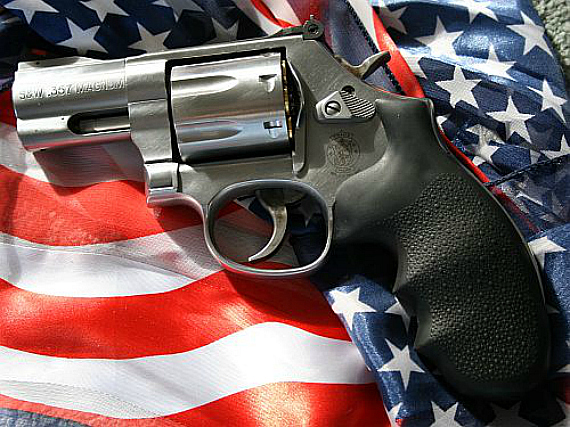
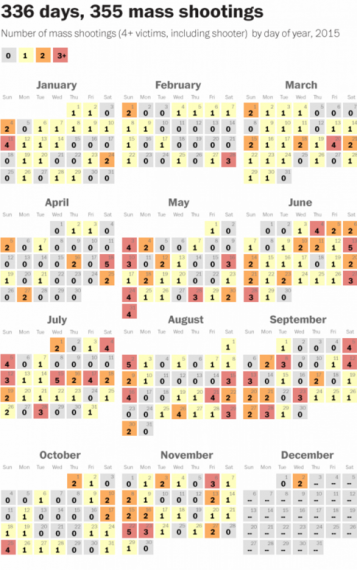

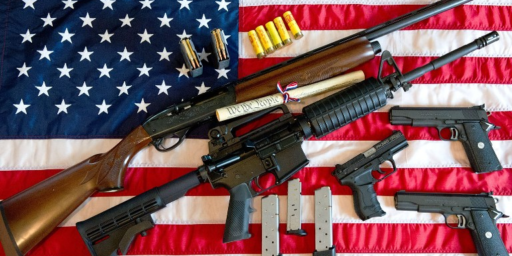
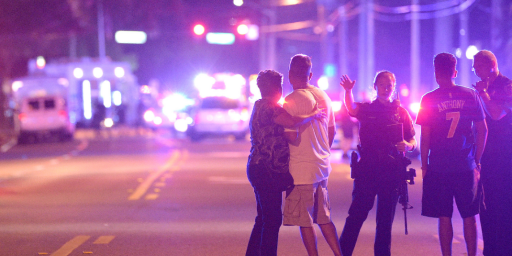

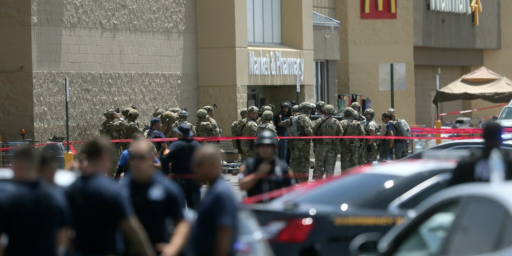
Could you please tell us then how many mass shootings are acceptable?
You are saying that 355 is a wildly inaccurate number designed to provoke fear and outrage, while a mere 64 mass shootings – barely more than one a week! – is simply due to the privilege of living in America and don’t worry about any kind of gun control.
@Facebones: 64 mass shootings over “the period from 2000 to 2013” is more than one a week? Your math may be faulty. I’m pretty sure it’s about 4.6 per year, just as the article says.
Or you can look at it this way.
“Mother Jones magazine gathered data on mass shootings for a 2012 investigation and has continued to update its list, counting 72 incidents from 1982 through Tuesday. The magazine uses relatively strict criteria — the incidents must occur in public places and can’t involve gangs or robbery. The primary motive must be mass murder. Also, Mother Jones excludes incidents in which the shooter killed three people or fewer — meaning that its count doesn’t include the shooting at a Colorado Springs Planned Parenthood clinic last week that killed three people. Events that fit the criteria are rare — the high in a single year was seven, in 2012. That means single large events have a big impact on the data, making it noisy. But the long-term trend is clear: There have been more total mass shooting incidents and deaths in the 11 years starting with 2005 than there were in the previous 23 years combined.”
“The shooting in San Bernardino on Wednesday was also labeled as an “active shooter” incident. The FBI defines an active-shooter incident as an individual or individuals “actively engaged in killing or attempting to kill people in a confined and populated area.” The agency counted 160 such incidents from 2000 to 2013 in which a total of 557 people were wounded and 486 killed. And the FBI found that these shootings were on the rise: There were 115 active-shooter incidents in the last seven years of the data set, up from 45 in the first seven years.”
“However mass shootings are defined, the deaths they cause represent a small proportion of all homicides committed with firearms in the U.S., which have declined from a decade ago, as has the overall murder rate, according to the Centers for Disease Control and Prevention.” – Well at least we got that going for us…go us!
Five Thirty Eight Article
The 355 appears to be correct it you use the criteria that is clearly defined in the Mass Shooting Tracker. Now if you wish to dispute whether that criteria should be used or not, that is a different issue.
It does cause a lot of confusion to use (or discuss) numbers when different criteria are used for comparison and the criteria are not clearly established.
Personally I think the Mass Shooting Tracker criteria is a little bit light, 4-injured or killed, as opposed to some of the major incidents. But at least they clearly state what criteria is used.
The focus on deaths instead of injuries strikes me as odd. As the link @Jc: provides shows, shifting the focus from victims to deaths drastically skews the results. Are we really saying that if a gunman sprays bullets in a crowded theatre, hits 40 people, and by the Grace of God all the victims survive, then that wouldn’t be considered a mass shooting. But if that same person enters the same theatre, and shoots 4 people in the head, and doesn’t even attempt to injure or kill anyone else, that would be a mass shooting?
This is not a snarky question–I feel I’m missing something here, and would love some illumination.
This is some really basic quibbling over a definition. I personally agree with the broader definition because it counts shootings as shootings (you don’t have to die to be shot, do you?), and because the definition that only counts the dead can lead to some patently ridiculous outcomes like 20 people being shot but only one dying not fitting the definition of a “mass shooting.” Indeed, by your preferred definition the Colorado Springs shooting last week wasn’t a “mass shooting” because even though 12 people were shot only three people died. That’s beyond ludicrous.
Also, the guy who runs the /r/gunsarecool subreddit is pretty pissed off at what he believes is a selective and misleading edit Mark Follman made of their correspondence.
“At the very least, though, if we’re going to talk about this issue, we ought not be polluting the debate with largely phony statistics, and the numbers the media are using right now to claim that there have been more ‘mass shootings’ than there have been days in the year is simply not providing an accurate picture of what’s happening.” Agree Doug, and also we should not make many phony assumptions such as since all homicides committed with firearms have declined in the past ten years, it must because more citizens are packing heat.
@Mikey:
It appears we’ve conflated “mass murder” and “mass shootings,” and have decided that only murders count as shootings.
Tis odd.
Shorter Doug: “If you get shot in the back and suffer a disabling injury, be happy! At least you aren’t dead. Do you know your survival proves that the rate of firearms related deaths has gone down? High five, buddy!”
Maybe what this proves is that our doctors and hospitals have become really, really good at treating gunshot injuries (what with the practice they got in the 1970s and 80s) and are saving people who would have been dead if shot 20 years ago? I note that the ratio of dead to wounded among the Iraqi War casualties is much lower than in earlier wars.
Anyway, we should note for the benefit of occasional readers that the OP is a gun rights enthusiast with a vested interest in downplaying firearms related violence, so that has to be taken into account in his insistence in using the narrowest statistical measures of gun violence possible.
Whatever measures used, we have a problem that deserves a better reaction than quibbling over statistics or (if you are Republican legislator) offering only “thoughts and prayers” . I don’t see Doug’s response as being any more helpful than Paul Ryan’s, frankly.
Pretty sure the NRA does. The Republican legislators are following their lead on this, too.
Mass shootings in U.S. have tripled in recent years, FBI says
“An FBI study identified 160 incidents that involved a shooter in a populated area between 2000 and 2013. The study did not include shootings tied to gangs or drugs. (FBI)”
Not sure we should be congratulating ourselves on a decrease in gun violence when the number of shootings has tripled. Furthermore, while there’s no universally accepted definition of a “mass shooting,” every article I’ve read that uses the “one a day” number specifies they are saying a mass shooting is one in which 4 or more people are killed or wounded. Mother Jones prefers to use a definition of “the motive appeared to be indiscriminate killing.”
It doesn’t appear to be the data you’re disagreeing with, but the definition. Frankly, I am less interested in a shooter’s motives than in the number of wounded, be it fatally or not. Easy access to high-powered weapons and large magazines puts innocent people at risk, whether it’s a disgruntled employee doing the shooting, a Jihadist, or your schizophrenic brother in law.
Worth quoting reddit guy:
Yup. Notice the gun rights folks never seem to give a s&*t about urban gang related shootings, except when they can use it to argue that there are no gun violence or police brutality problems?
@rodney dill:
The 355 appears to be correct it you use the criteria that is clearly defined in the Mass Shooting Tracker. Now if you wish to dispute whether that criteria should be used or not, that is a different issue.
Exactly. Doug’s claim that this is bad data, or misleading, or dishonest, is absolute bullshit. And it’s based on the premise that a incident is not a “mass shooting” unless the victims are indiscriminately targeted. Do you not know what the word “mass” means, Doug? It doesn’t mean random or indiscriminate.
What that Reddit group is interested in looking at is gun violence. It isn’t focused on loners who go on rampages of random people. If you are interested in only those crimes, fine, but don’t accuse others of being dishonest because they are interested in a broader problem.
Apparently America is full of terrorists…
The singular, most germane point being ignored is WHY are shootings and, in fact, violent crime on the rise? There was a time when nearly every household had at least one gun yet people going out and randomly killing others was nearly unheard of. So what’s changed?
Moral decay is the causative factor at play here. This country has always been, until recent years, primarily Christian with a strong moral fiber. But booting God out of the public square, the family and even the Church has had a profound, deleterious effect on the character of this nation.
Disarming isn’t the answer. Christ is.
@Al:
Ask the American Indians, or the blacks lynched under Jim Crow, if random killing of others was nearly unheard of throughout American history….
@Al:
What was that Jesus said about not using weapons again?
Jesus said, “You have learnt how it was said: ‘Eye for eye and tooth for tooth.’ But I say to you, Offer the wicked man no resistance. If anyone strikes you on the right cheek, turn the other also; if a man takes you to law and would have your tunic, let him have your cloak as well. And if anyone orders you to go one mile, go two miles with him.” Matthew. 5.38-41
@Neil Hudelson:
I believe that part of it is because of instances like Mediaite pointed out that the reddit methodology was including incidents like “bunch of 11 year olds messing around with bb guns” as “mass shootings” since technically 4 people were shot.
@Al:
Violent crime and shootings are both on the decline. Mass shootings are on the rise, and steeply so.
Overall this is a net benefit, but of course we should still focus on the facet of crime that is on the rise. Of course most mass shooters–San Bernardino notwithstanding– have been raised in a culturally Christian household.
So if “moral decay” is the cause of our current society, we should be calling for more “moral decay,” while examining why culturally Christian households are fueling the one facet of violent crime that is on the rise.
@jpmeyer:
Thanks for the reply. I would think, then, the standard should be tightened around motive, rather than number of victims.
I am also worried about an 11 year old who accidentally shoots 4 separate friends, even if its with a BB gun. :-P.
When terrorists buy guns in America, Doug feels more free.
What’s actually more worrying to me is that all this hype seems to be causing more people to buy guns to “protect” themselves. I’m not sure what channel was on at the gym last night, but some 32% of people live in a home with a gun now. That statistic is going UP, not DOWN. And the more people that buy, obviously the gun industry responds by making more weapons, faster and cheaper. To me, the answer is to quit living in fear and causing others to live in fear.
You know if Doug likes Mark Knollman’s approach so much, why did he cut off the concluding paragraph :
Hu. I guess taking action of any kind -even just removing the CDC gag rule-is just not on Doug’s agenda.
Remember: New definition of “mass shooting” is “four or more people hit by bullets”. Remember that when they trot the totals out. If JJ shoots Pookie, Ice Dog, and Ray-Ray, and one of them manages to wing him back with return fire, that’s a “mass shooting”.
http://www.pagunblog.com/2015/12/03/quote-of-the-day-definition-of-mass-shooting/
But the Waco II and 2012 Empire State shootings don’t count as mass shooting as the bullets were fired by the panicking police.
@Paul L.: You’re Jack!
Pookie? Ice Dog? what? is this some new right wing meme I missed?
A more interesting question would be how many mass shootings have there been this year in the strict “gun control” cities of Chicago, San Francisco, New York, Boston and Baltimore. Depends I guess on how you define mass shooting.
If for example a drug dealer in Chicago guns down two of his competitors, right at the exact moment a white trust fund baby Obama supporter at a cocktail party in Kenilworth starts talking about the need for gun control, does that count as a mass shooting? If for example a street pimp in the Tenderloin District guns down two rivals who owe him money, at the precise moment an inherited wealth liberal stockbroker at a cocktail party in Pacific Heights rails about Republicans, is that a mass shooting?
@stonetools:
Many–probably most–Army physicians specialize in trauma medicine, for obvious reasons. If, after leaving the service (and its decade-plus of combat injuries), they take jobs in hospital trauma centers, their experience would prove very valuable indeed in saving the lives of gunshot victims. I couldn’t find any numbers online, though, so it’s hard to tell whether or not this is contributing to the change.
@Mikey:
It’s also possible that they subscribe to the same right wing blogs. Right wingers are good at coordinating these blog swarms. They’re not great at the “independent thinking” stuff.
@Bill Lefrak:
Like, I dunno, man. If someone makes a dumb analogy on the Internet, does it make a sound?
@Paul L.:
Hey thanks for bringing up information that’s both presented and analyzed in-depth in both the article and the comments section. Super helpful!
@Mikey: Isn’t posting under more than one name a violation of this site’s policies?
Only 4.6 mass killings per year???
Well. Great. So what’s the big deal???
I mean…that’s not even 5 mass killings per year.
A small price to pay in order to keep the gun industry profitable.
Carry on.
And next time there is wall to wall coverage of one of these incidents…just remember…there are less than 5 of these a year…so no need to get worked up about it.
@Al:
What would Jesus do? Go to the gun store and load up on ammo? Somehow I think not…
@stonetools: Hmmm…could be. I’m at work and my company’s content filter won’t let me see the link Paul L. put up. Maybe the racially-stereotyped list of names originated there.
@stonetools: It’s interesting that you bring up how advances in medicine are saving so many lives, and drawing a comparison to guns. Here is an article from Forbes in 2013 that discusses the number of PREVENTABLE deaths due to errors in hospitals. That number is 440,000 per year. Yes you read that right 440,000 preventable deaths per year in the United States due to errors in hospitals.
Forbes article
That’s over 1200 preventable deaths per day. I think it would be an easier problem to fix, could get bipartisan support, and could save a lot more lives. Yet, it’s nowhere in the news. You would think if human life was so important to the mainstream media, that this would be on the television every single day.
Realize there is an agenda… If there wasn’t we’d be hearing about preventable hospital deaths.
@jpmeyer: Please show which link(s) pointed to a bb-gun shooting included in the tracker, and how is this more than just an anomaly.
@Mikey: Turns out Paul L. and Jack aren’t the same guy–they just read the same tripe on the same blogs.
At least Paul L. had the integrity to link his source. Jack just barfed it up–word for word–with no attribution.
@Bill Lefrak: Is your solution that the rivals of the “street pimp in the Tenderloin district” have easier access to firepower?
I was expecting you to prove that the data was faulty, but you failed to do that.
It is fair to point out that the definition of “mass shooting” differs from what is typically used by official agencies — because it is a term of art, it can be easily misunderstood and is therefore misleading. But the size of the body count doesn’t provide you with any bragging rights.
As I noted in the other thread, that can only be considered to be true if you ignore some of the data. The rate of those who are threatened by guns is indeed declining, but the rate and number of those who are being shot by them are increasing.